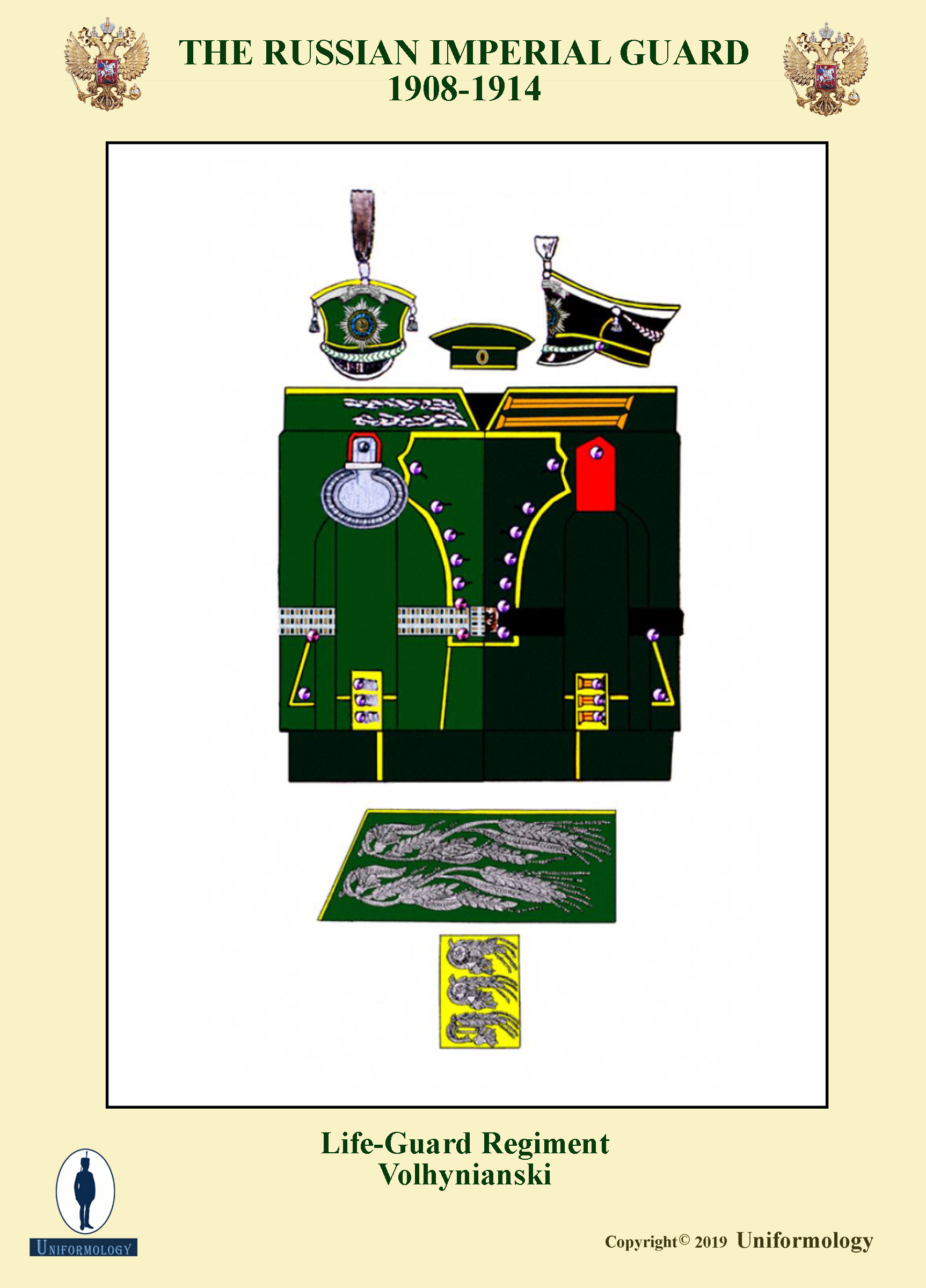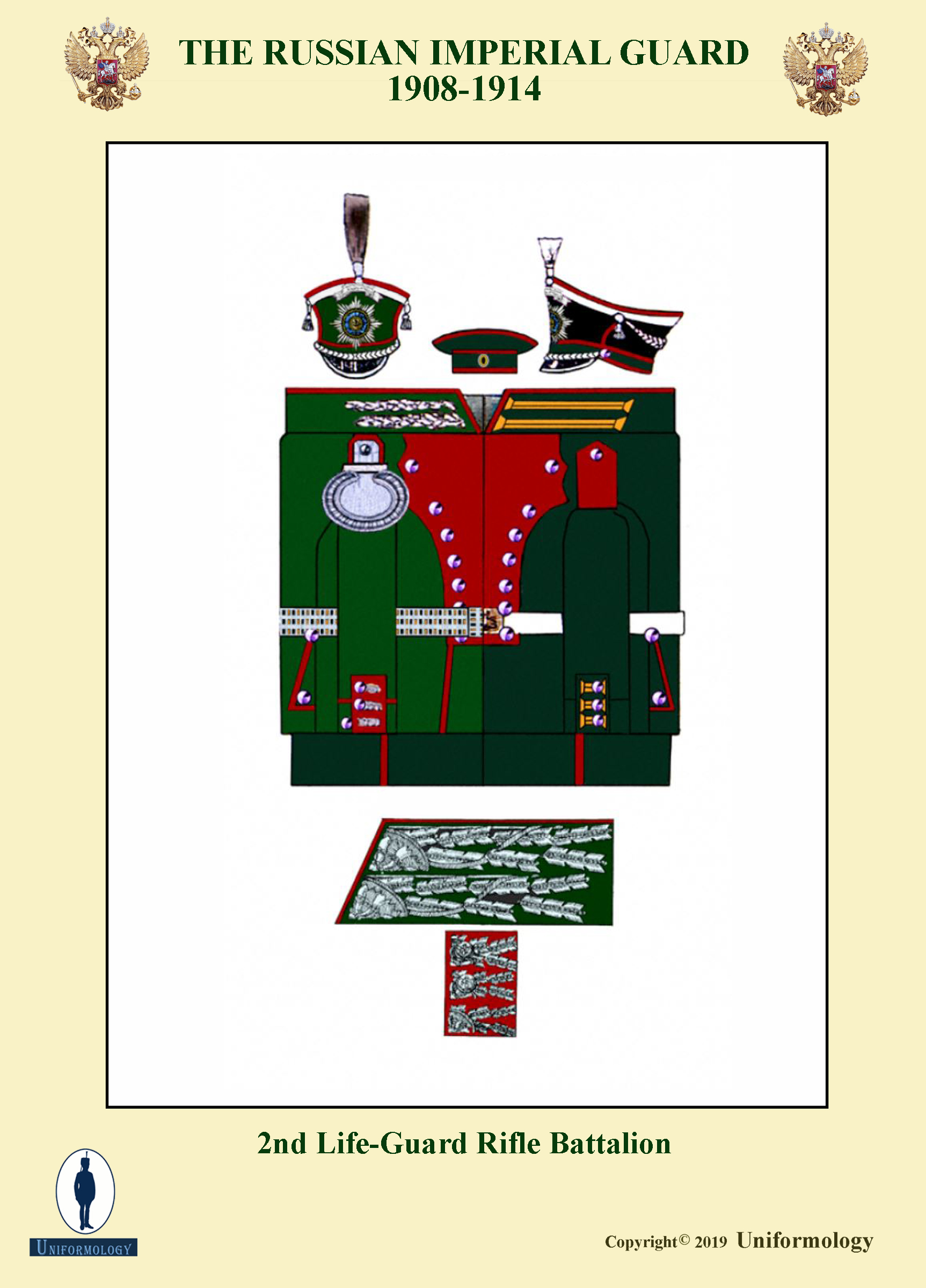THE WORLD OF MILITARY UNIFORMS
1660-1914
THE RUSSIAN IMPERIAL GUARD
1908-1914
By Col. V. K. Shenk
Page 1
ABOUT THE ILLUSTRATOR
Colonel V.K. Shenk was was an officer in the Imperial Russian Army. He served in the Russo-Japnese War. When Tsar Nicholas II introduced new uniforms for the Russian army in 1908, he decided to illustrate the changes in diagramatic format. It was published in 1910 and included every unit of the Russian Armed Services. It quickly became the standard reference work for the Imperial Russian Army uniforms.
THE RUSSIAN IMPERIAL GUARD
1908-1914
Illustrations reproduced from the book by Philip Cranz published by Uniformology in 2004
Alexander III, who succeeded his assassinated father in 1881, immediately swung Russia rightwards. He abolished many of the liberal policies of his father and established a less European, more Slavic approach to matters of state. In the case of the Army, he did away with double breasted tunics and French style shakos and replaced them with a more nationalistic uniform. The infantry adopted the “kaftan”, a double breasted smock which hooked up to the right. The baggy trousers were tucked into knee boots and the headdress was a round fur cap for parades (shapka) and a peak less cap known as a fourashka. Equipment was worn en banderole.
Alexander III also abolished cuirassiers, hussars, lancers and other cavalry units (except Cossacks) and converted all cavalry to dragoons … dressed similarly to the infantry with differences pertaining to cavalry.
Since much of the campaigning was taking place in central Asia and the far east, most soldiers wore the undress kittel and fourashka. This was the era of the “Great Game” between Russia and Great Britain.
Alexander III died unexpectedly in 1894 and his son Nicholas II succeeded him. Nicholas was a weak man, but he did little to change the character of the army. He allowed it to decline in all respects and by the time of the Russo-Japanese War in 1904 it was ill equipped to fight. The defeats on both land and sea humiliated Russia.
Like many an Emperor before him, Nicholas chose a change in uniform to raise morale (and change the subject … sort of) in 1908. The new uniforms harked back to the glory days of the 1812 and the defeat of Napoleon. The Kiwer, the shako of those times (slightly shortened) was authorized for all Guards regiments of Infantry, Artillery and Engineers. The Life-Guard Infantry regiments wore the double breasted tunic with coloured lapels. The Line infantry wore plain dark green double breasted tunics piped in red. The Fourashka (somewhat stiffened) became the dress and undress cap. The Cavalry regiments were converted back to Cuirassiers, Dragoons, Hussars and Lancers and Cossack regimental uniforms became much more elaborate.
At the end of the day, it didn’t help the efficiency of the Imperial Russian Army and in 1914, woefully led, they marched off into defeat after defeat and ultimately into history.
CLICK ON IMAGES TO ENLARGE
2nd GUARDS INFANTRY DIVISION
1st BRIGADE
2nd BRIGADE
1st GUARDS INFANTRY DIVISION
1st BRIGADE
2nd BRIGADE
3rd GUARDS INFANTRY DIVISION
1st BRIGADE
2nd BRIGADE
1st GUARDS RIFLE BRIGADE
NEXT: GUARD CAVALRY AND ARTILLERY

















